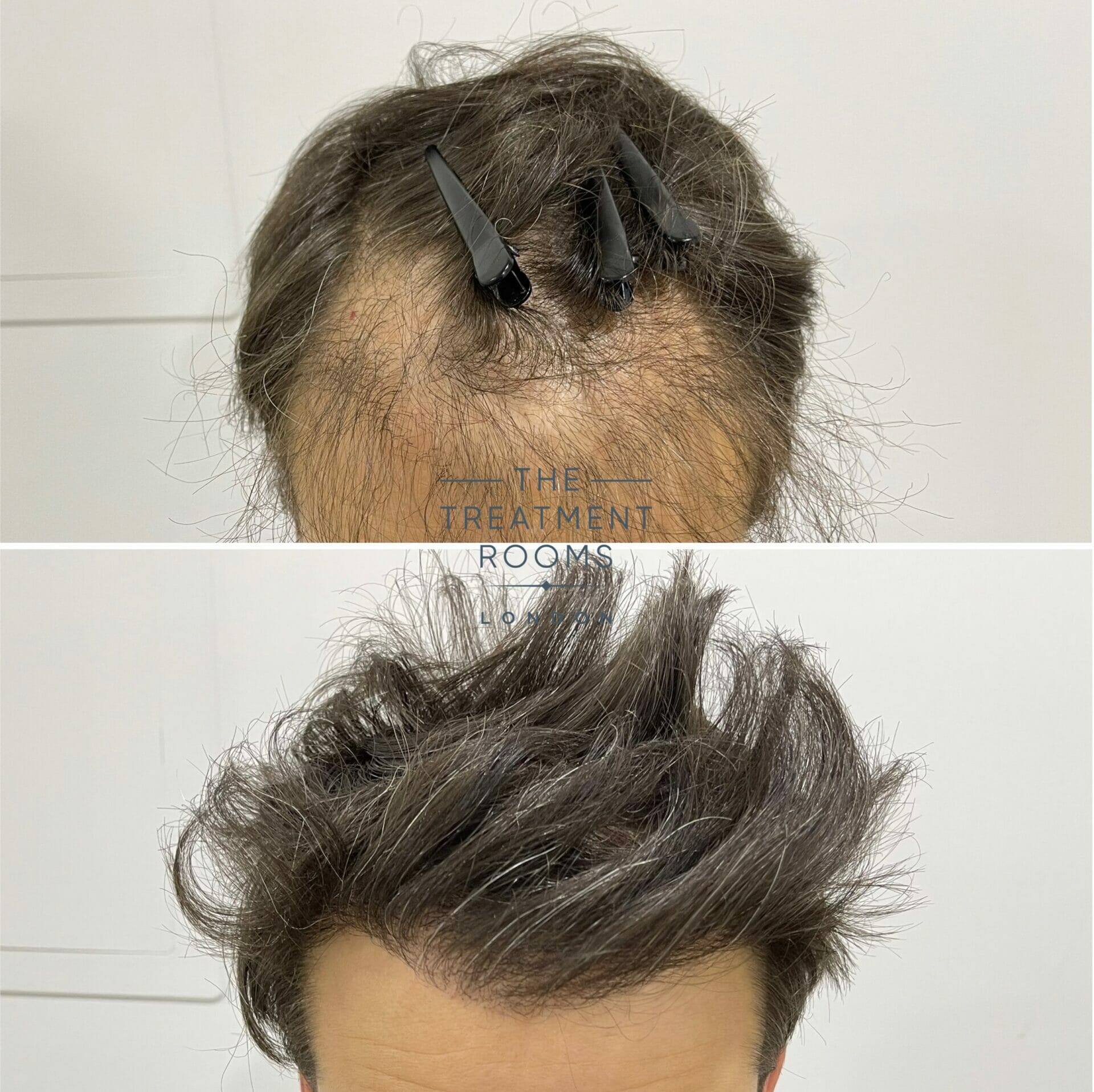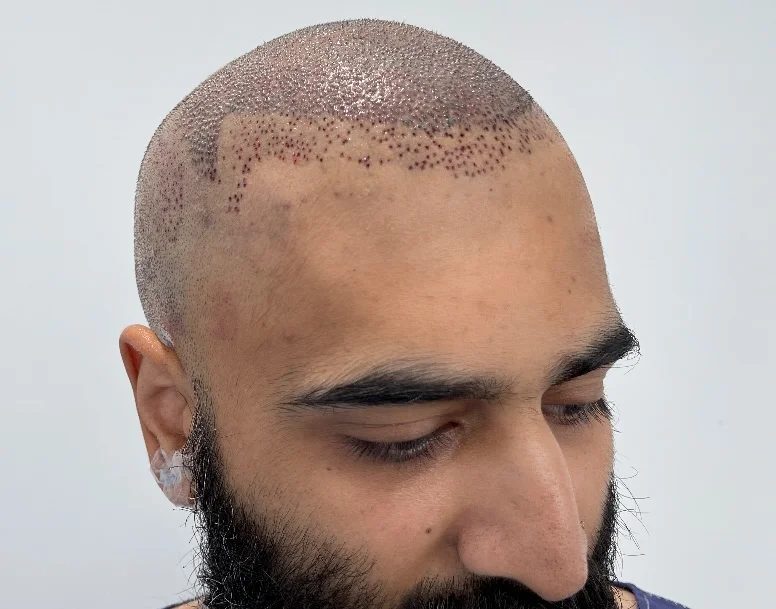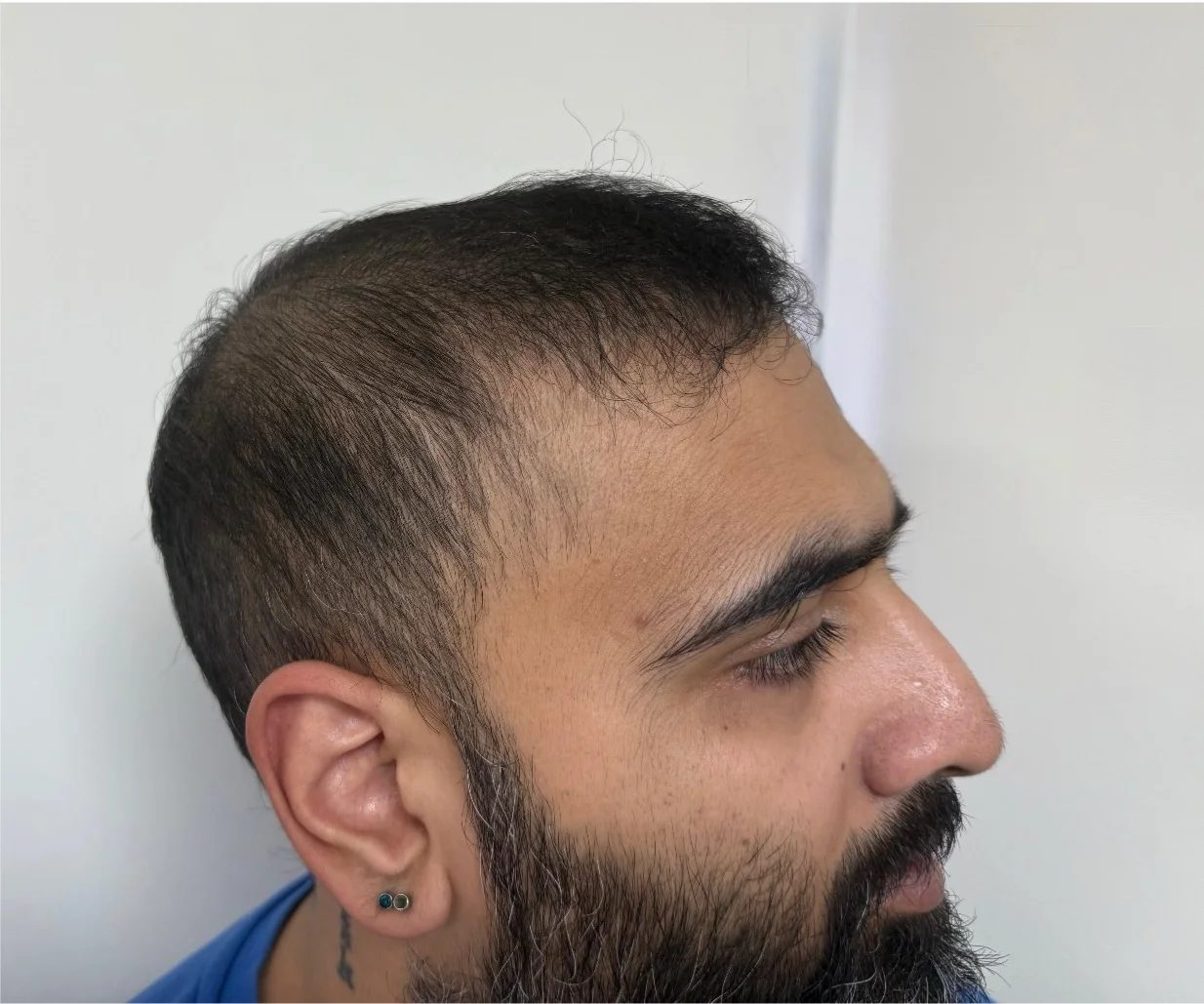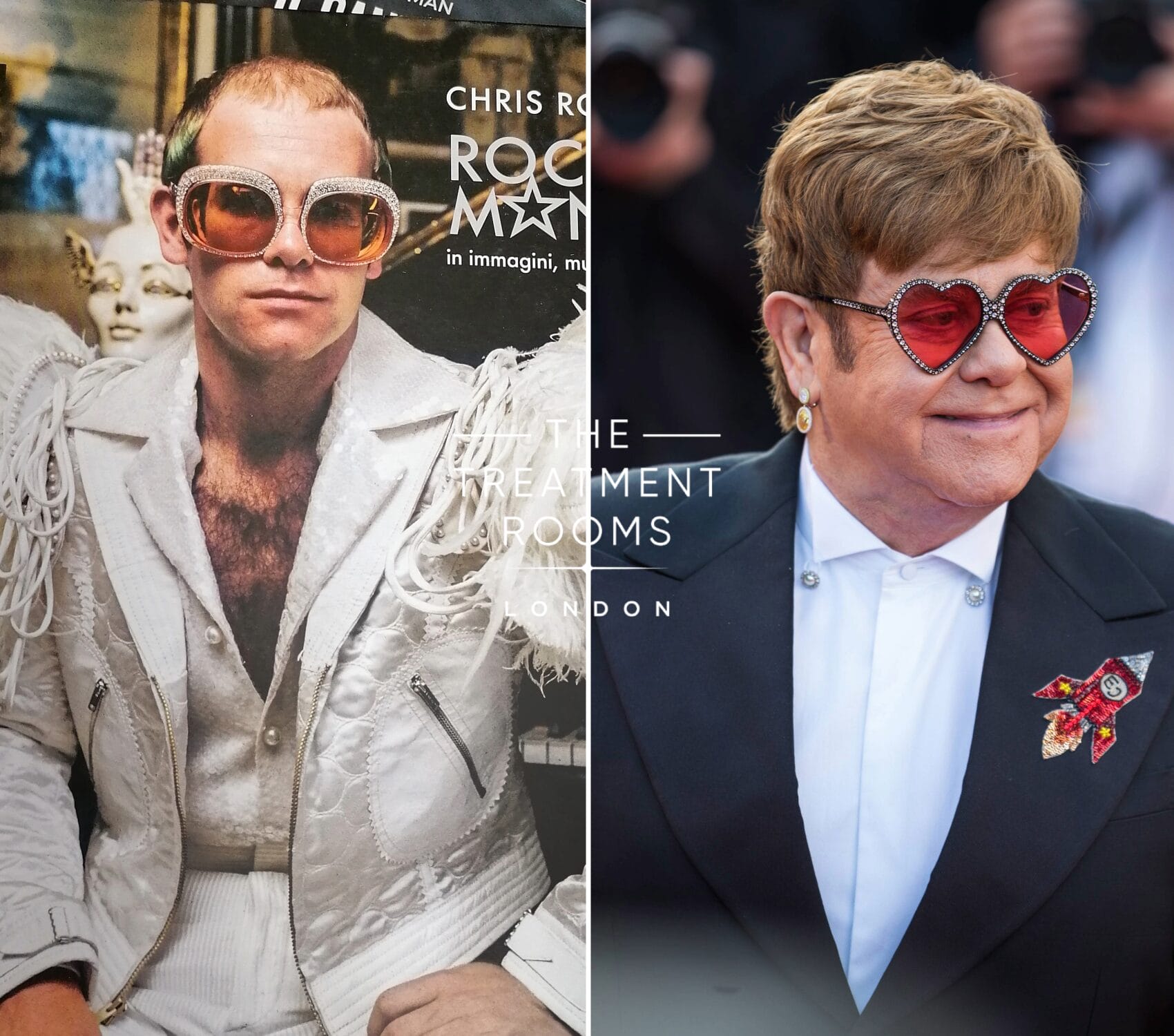Hair transplants are generally a safe and effective procedure, with a success rate of around 90–95%. However, in some rare instances, you may be unhappy with your FUE or FUT hair transplant and this can be some of the following:
- Poor growth/ density
- Poor healing
- Incorrect angle and direction of implanted hairs
- Further hair loss following surgery
- Visible scarring in the donor site
Thankfully, there are options available that can help correct a hair transplant that doesn’t meet expectations.
In this article, we look at some of the most common reasons why hair transplants might fail, what to look out for if you think yours might have gone wrong and what you should do if a hair transplant doesn’t meet expectations.

Why do some hair transplants fail?
At The Treatment Rooms London, we audit our success rates following hair transplant surgery. They tend to average above >95% with patients reporting positive changes in their mental health and hair following surgery.
Since 2021 our clinic has bee collecting data on patients who’s hair transplant surgery has failed. We have collected information on what has gone wrong and what may have been the reasons for their issue. It has help to increase understanding why a hair transplant might fail which can help patients make a better-informed decision around correction going forward.
Here we’ll look at a few of the most common reasons why some hair transplants fail.
Hair transplant graft rejection
Graft rejection is a rare reason for causing hair transplant failure. This is often compared to kidney or heart transplant rejections and is usually interpreted as the body not accepting the transplanted hair. This can be down to a variety of factors, often secondary to a patient’s autoimmune condition. An example of this would include a condition known as lichen planopilaris.
This condition affects the hair by attacking and destroying the hair follicle, after which a degree of scarring remains. Another condition includes alopecia areata which causes patchy hair loss. Both these conditions can result in temporary or permanent hair loss and is a contributor to why hair transplants fail to grow in some individuals and can be undetected before surgery is even performed.
Ineligibility for hair transplants
Your general level of health and hair loss cannot be overestimated when considering why hair transplants fail.
The ideal hair transplant candidate has a healthy donor area of hair, and is generally below the age of 65. They would have often stabilised their hair loss with medications such as Finasteride or Minoxidil. Sometimes patients will have naturally come to a point in their life where they aren’t losing any more hair. It is important to evaluate the future risk of hair loss as if you lose more hair after having a hair transplant it can make your hair transplant result look patchy.
Poor donor area for hair transplant surgery
Failure to have a thick, healthy donor area with hair that is viable for transplantation can ultimately lead to a failed hair transplant. Patients should have their donor site evaluated by their Surgeon to understand how much hair can be transplanted across their lifetime. This allows for future hair loss planning
Poor hair transplant aftercare
The recovery and aftercare process is an essential part of any hair transplant. Correct post-transplant care helps support the transplanted hair follicles — promoting growth and assisting with healing the donor and transplant areas.
Failing to follow optimal aftercare can result in a failed hair transplant. If you receive a hair transplant, be sure to follow any advice your surgeon gives you. This can include sleeping in a position that avoids friction in the transplanted area, as well as appropriately washing your transplanted area too.
Inexperienced hair transplant surgeons or clinics
In some instances, a hair transplant may fail due to poorly skilled or inexperienced surgeons or clinics.
While hair transplants are generally a safe operation, due to their popularity, many clinics offer the service but fail to meet the strict safety and hygiene guidelines required. An inexperienced surgeon may transplant the wrong donor grafts or over-harvest the transplanted hair follicles. Unhygienic clinic practices can also contribute to an increased risk of infection (folliculitis) post surgery.
When considering a hair transplant, be sure to choose a clinic that is registered with and inspected by the Care Quality Commission (CQC), a regulatory body that ensures safe, quality clinical practice in every healthcare clinic.
You should also check whether your chosen surgeon is registered with the British Association of Hair Restoration Surgery (BAHRS) and the General Medical Council (GMC). These professional organisations ensure your chosen hair transplant surgeon is regulated and works according to their rigorous codes of conduct.
For more information and advice, visit our article on how to find a good hair transplant surgeon in the UK.
How to tell if you’ve had a bad hair transplant
Although they’re usually successful, bad hair transplants can happen. There are several ways you can tell if you’ve had a bad hair transplant. These include:
- Excessive scarring: this is usually caused by below-standard surgical tools or an incorrect technique performed by an inexperienced surgeon.
- Unnatural direction of hair growth: identified by transplanted hair growing in the wrong direction, this is often caused by poor surgeon technique.
- Infection: excessive swelling or redness around the transplanted area may be a sign of infection, and is typically caused by unsanitary surgical tools.
- Unusual hairline: often characterised by an unnatural angle, this is also due to poor technique or inexperience.
- Insufficient hair growth: usually measured 12 months after surgery, poor hair growth can be due to a variety of reasons including poor aftercare.
If you are experiencing any of these symptoms after your hair transplant, do not be disheartened — it can take 9-12 months after your surgery to start seeing real results. Be patient and wait for at least a year before fully assessing your hair transplant.
What to do if a hair transplant doesn’t meet expectations?
Sometimes, hair transplants don’t quite meet the patient’s expectations. If you feel your hair transplant doesn’t match up to what you expected and you’re not happy with the results, there are several options available to you.
A second hair transplant
If your first hair transplant didn’t deliver the results you expected, a second hair transplant is still an option.
A second hair transplant can help improve follicle density in the affected areas, as well as add coverage for large balding spots. Many patients choose a second hair transplant if they feel their first one failed and they are simply not happy with the results.
Before you get a second hair transplant, your surgeon will first need to assess your eligibility.

Scalp micropigmentation
Scalp micropigmentation, also known as a hair tattoo, involves carefully filling up and completing any balding areas of the scalp with a coloured pigment to give the appearance of hair follicles.
These can be customised to suit the patient’s unique hair type and style, with adjustments for depth and angle available to help deliver a natural result. Scalp micropigmentation is often considered when it is not possible to achieve high-density hair transplantation.
Second hair transplant surgery
Revision or having a second hair transplant surgery typically takes place following a failed hair transplant that occurred as a result of the surgeon’s poor performance.
If you are not happy with your original clinic and are looking for a different clinic, Treatment Rooms London offers four types of revision surgery.
Unnatural hairline repair
If your hairline looks unnatural after your hair transplant, this can be corrected with a follicular unit extraction (FUE) transplant or FUT hair transplant. This involves taking hair from the donor area and then transplanting it to create a new hairline or mask an unnatural one.
Poor follicle quality repair
If a poorly performed procedure results in insufficient hair follicle quality, these can be removed and replaced with new grafts taken from a donor area. This is also performed using the FUE procedure to extract poorly implanted follicles.

Poor hair density repair
Poor hair density is usually a result of insufficient hairs being transplanted during the original procedure. This is repaired using the FUE or FUT technique by implanting extra hairs into the affected area.

Wide FUT Scar repair
Wide scarring can occur after a follicular unit transplant (FUT) but can be remedied by again using the FUE procedure or with scalp micropigmentation. The replaced hair helps cover the worst of the scarring, while a hair tattoo helps blend it in, disguising any remaining scar tissue. To find out if you’re eligible for a hair transplant scar repair, please visit our page.
Book a consultation
If you are unhappy with your hair transplant, Treatment Rooms London offers a wide range of corrective techniques that can help disguise and remedy any bad transplants or unsatisfactory results. Our procedures are safe, and effective, and can help you achieve the look you want.
Book your consultation with Treatment Rooms London today.
Sources
Share:
Authored by
Reviewed by
Book a Consultation
Related Blogs
Elton John and His Hair Transplant Journey
March 27, 2025
Sir Elton John has had one of the greatest careers in music. Since his rise to fame…
Steven Whittaker’s Hair Transplant – Before And After
March 25, 2025
As Hibs legend Steven Whittaker makes headlines for taking the Dunfermline player-coach role, many gazes have turned…
Donald Trump’s Hair Transplant Rumours: True Or False?
March 25, 2025
Donald Trump has long been a figure of controversy and conversation, known not only for his political…
Cesc Fàbregas Hair Transplant: Before, After and His New Hairline
March 24, 2025
Hair loss is a common concern among celebrities whose public image often plays a significant role in…
The Effects Of Finasteride On Semen
March 20, 2025
Finasteride is commonly taken to help prevent hair loss in men suffering from male pattern baldness. Before…
A Guide to the Norwood Hamilton Scale: Understanding Hair Loss Stages
March 20, 2025
The Norwood scale (or Hamilton-Norwood scale) is the leading classification system used to measure the extent of…
Male To Female (MTF) HRT Hair Regrowth
March 18, 2025
While hair loss can happen to anyone and negatively impact your wellbeing, it can be incredibly challenging…
Jamie Laing Hair Transplant: Before, After and His New Hairline
March 18, 2025
Taking action to retain his youthful hairline, Jamie Laing decided to get a hair transplant, which changed…
Jack P Shepherd Hair Transplant: Before, After, and His New Hairline
March 12, 2025
Jack P. Shepherd is best known for portraying David Platt in Coronation Street for over two decades….











